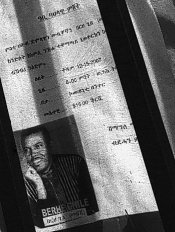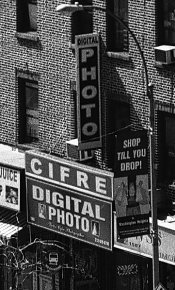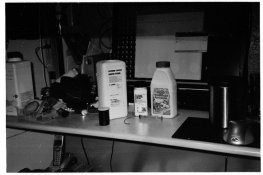I've started experimenting with monobaths.
I decided to use Donald Qualls' formula, simply because the ingredients were easily available - or so I thought.
Jessops don't stock HC-110, and other places would have been closed by the time I could have got there.
Undeterred however, I grabbed a copy of Ilford's competitor equivalents datasheet and saw that as equivalents for HC-110 they list Ilfotec HC and LC29.
I have a bottle of LC29, so I decided to experiment with that and FP4+.
The first experiment was a resounding failure. I used the quantities listed in DQ's formula, and got very slight development and no fixing, even after around 30 minutes.
For the second try, I modified the formula after looking at the tables on the dev bottle.
I made up 200ml, using 20ml each of dev and fixer, along with 30ml 9.5% ammonia solution.
To my surprise and gratification, it worked!
The negs are quite thin, and have a line running across them, as I didn't mix up enough to completely cover the film, but for all that, they are completely cleared, and there is an image there - probably printable in most cases.
I now need to tweak the formula to give better development, so I'll post again when I've got more results.
EDIT:
In true fast process style, I dropped the negs in isopropyl alcohol to dry them quickly, and I've just scanned one, attached.
Please excuse the dust and other garbage on the scan.
Pentax Espio 115G, Ilford FP4+, straight scan from neg













